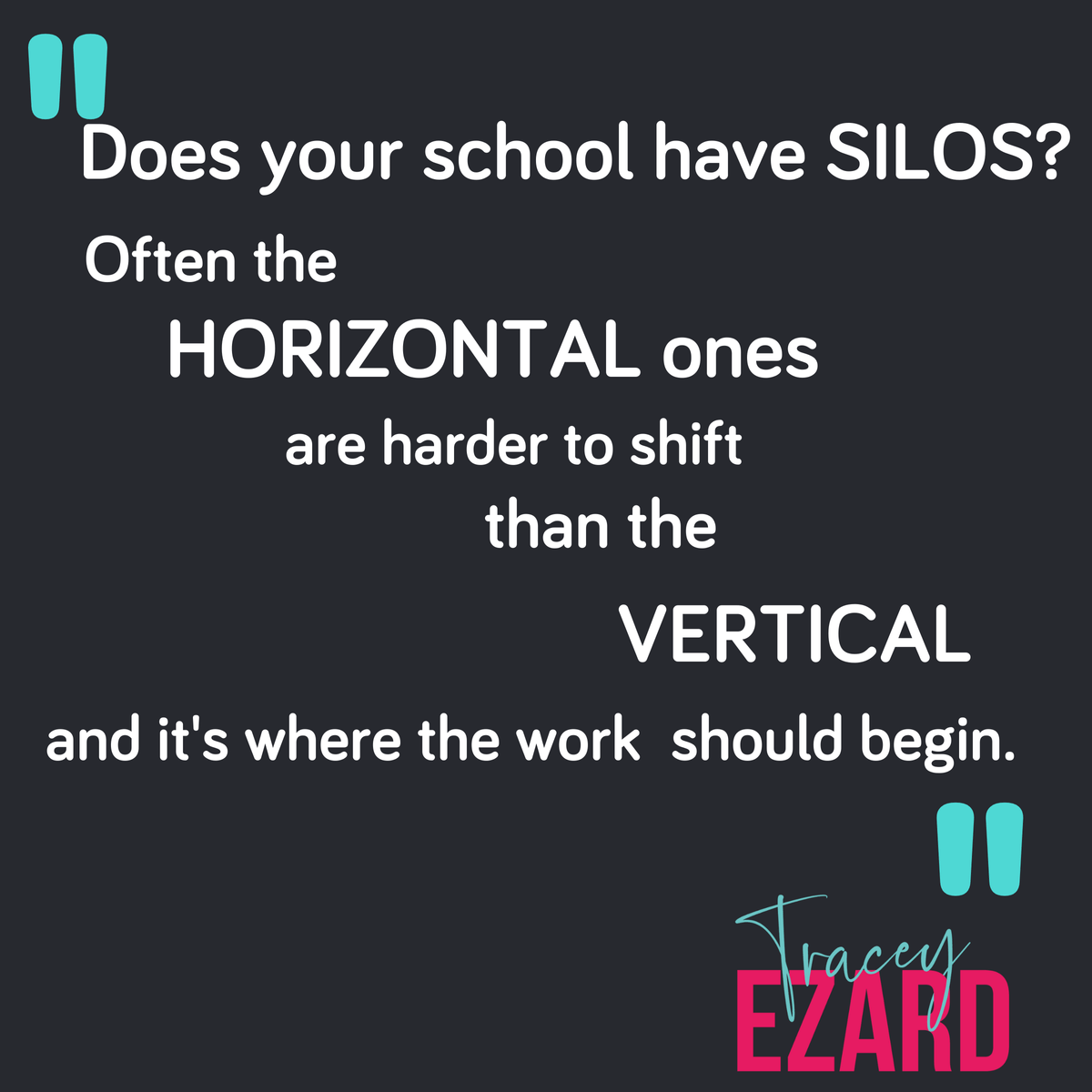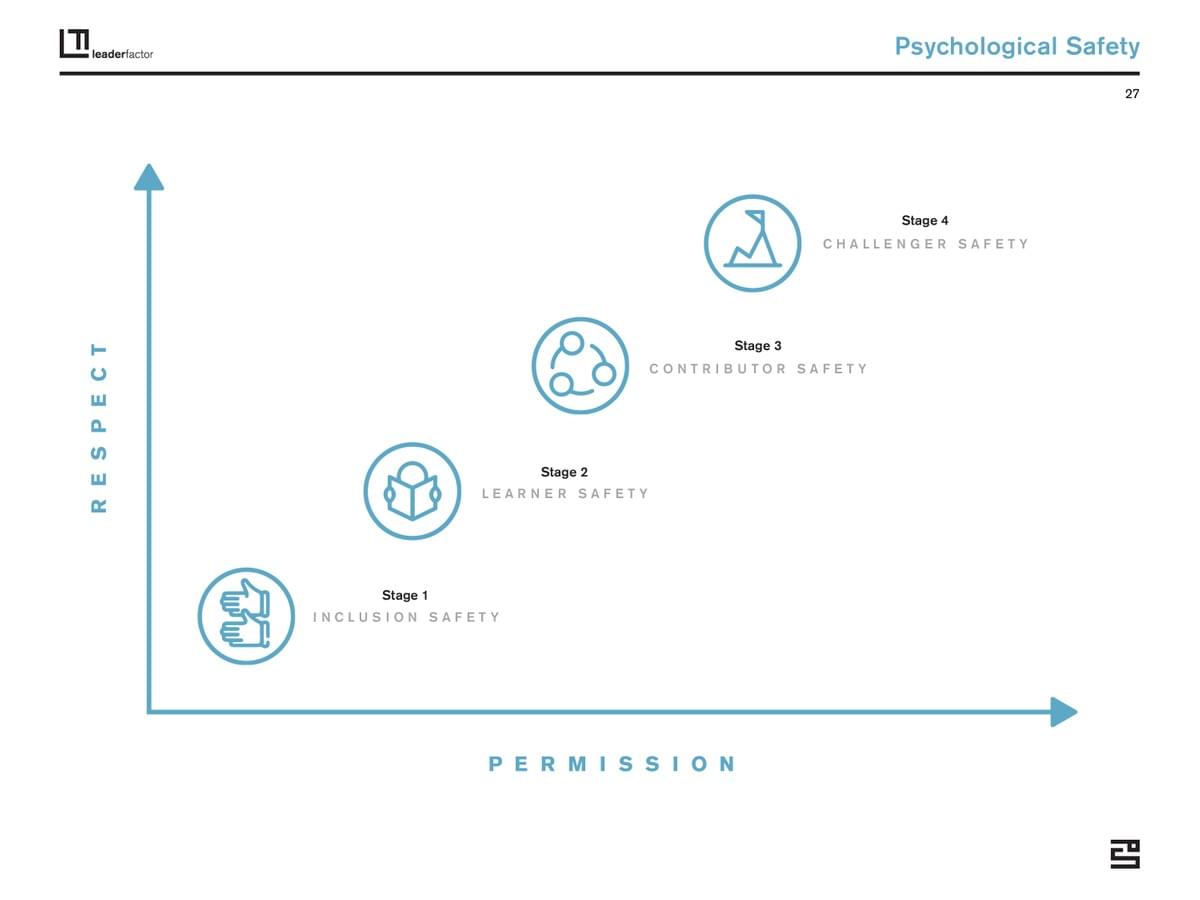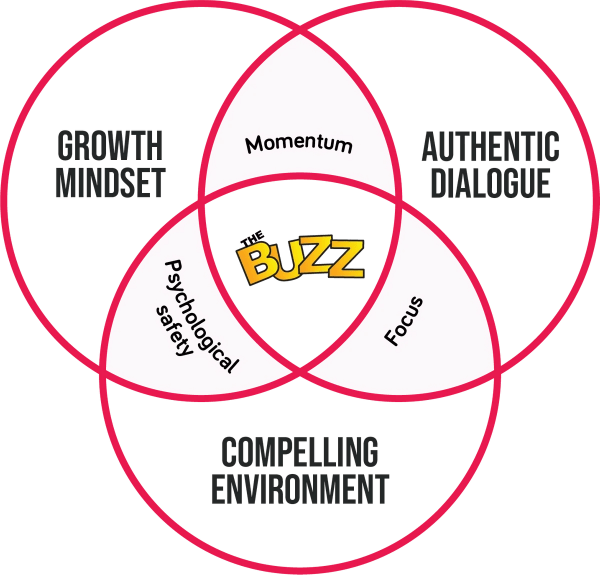HORIZONTAL SILOS
Not all silos are vertical. Often schools talk about collaborating more effectively across teams to achieve greater school wide change. But what if the main issue is up and down the school? Silos come in many forms: teams, ways of working; working in isolation; decisions made in one part of the school that impact negatively on another; empathy silos where we love each other in our team, but everyone else - nah not so much!
But there are other silos that ensure that our vertical silos stay in place - the horizontal kind. They are often found in schools where voice, psychological safety and trust are not strong between the different levels of the organisation.

Horizontal silos can look like:
- lack of trust for openness and honesty between teachers, support staff and leadership
- a culture of 'us' vs 'them' between the senior leadership and the rest of the organisation
- strong hierarchy that stifles robust debate and candour between all levels
- a perception of a lack of safe forums for whole staff and school discussion
- a culture that gives worthiness of contribution attributed solely on status
- decisions made in senior levels not explored and teased apart with the levels doing the implementation (the 'told from the balcony syndrome')
- a fear of raising issues to the level above
- lack of consistency of communication from one level to the next
Where do we start?
When you can see there is a strong divide between the hierarchy levels look first to the overlap between each level.
Build capacity and capability to increase the robust discussion and insights between these two levels. Explicitly create that skill in the two levels involved. That requires leadership to learn how to create psychological safety and a willingness to listen with curiosity not judgement.
As leaders get better at listening and problem solving WITH the next level down not FOR them, insights and dialogue create better understanding and better decisions.
Do this first at all overlap levels of your school and then naturally the discussions will start to open up the ways to de-construct the vertical silos as well. The whole school will have not only the forums for good debate, but the psychological safety and trust to use them to create better ways of working.
Dealing with the horizontal silos is not an overnight fix and the first step is self-awareness of leadership that this could be what is occurring.
If you think this may be happening in your school, this blog: Does Your Presence Allow Voice might help further.
I'd love to hear any of your insights into horizontal silos - do they exist? What is the impact?
PSYCHOLOGICAL SAFETY - THE KEY ELEMENT OF ANY HIGH PERFORMANCE TEAM

Psychological safety is a critical piece to creating any culture - whether one simply of safety to be included, or safety to innovate. I use the work of Timothy R.Clark to help teams build this foundational element of any team. A 3.00 am accreditation with Timothy R. Clark in the US was the bonus on the cake for me. Learning from Tim's wealth of knowledge and research in this space was invaluable.
If you haven't seen The Four Stages of Psychological Safety ™ framework then the book is a must-read. Along with the work of Professor Amy Edmondson of Harvard in this space, the Four Stages™ Framework is a game changer. The concept of the 'exchange' that happens as we move up never fails to open up understanding as to the collective notion of psychological safety.
Stage 1 - Inclusion Safety - I feel safe and included here simply because of my human worth and absence of doing harm.
Stage 2 - Learner Safety - I feel safe and encouraged to learn in exchange for engagement in learning.
Stage 3 - Contributor Safety - I feel safe to contribute in exchange for effort and results.
Stage 4 - Challenger Safety - I feel safe to challenge the status quo in exchange for protection and candour.
The nuance and edge that diving into psychological safety gives a team is quite extraordinary. Echoing my thinking in the silos article above - if it isn't in place in the senior leadership, it is very in doubt in the rest of the school.

Within the Buzz approach, psychological safety sits in the overlap of our collective growth mindset and the environment we create with each other.